 | TODAY IN SCIENCE HISTORY
NEWSLETTER - 2 JULY |
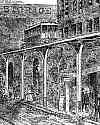 On 2 July 1867, the first elevated railway in America was opened in New York City. Although it was short-lived, it represented important progress to providing public transportation in the growing city. On 2 July 1867, the first elevated railway in America was opened in New York City. Although it was short-lived, it represented important progress to providing public transportation in the growing city.
An article in the Railroad Gazette (1904), Early Transportation in New York, gives a background of the various passenger transport projects, whether actually operated or ideas never implemented, that preceeded this first elevated railroad in NYC. The article continues with more insight on the development of rapid transit in NYC until the end of the century.
|
 On 2 Jul 1876, Harriet Brooks was born, the Canadian nuclear physicist who was probably the first to observe the recoil of the atomic nucleus as nuclear particles were emitted during radioactive decay.Ernest Rutherford called her the best woman scientist in the field next to Marie Curie. Yet, her success was hampered by the fact that she was a woman. Her premature death at age 56 was probably related to her work with radiation. Today's Science Store pick is: Harriet Brooks: Pioneer Nuclear Scientist, by M.F. & G.W. Rayner-Canham, who not only fill the gap in the contribution of women to science, but also provide an accurate representation of the early history of the theory of the transmutation of elements. On 2 Jul 1876, Harriet Brooks was born, the Canadian nuclear physicist who was probably the first to observe the recoil of the atomic nucleus as nuclear particles were emitted during radioactive decay.Ernest Rutherford called her the best woman scientist in the field next to Marie Curie. Yet, her success was hampered by the fact that she was a woman. Her premature death at age 56 was probably related to her work with radiation. Today's Science Store pick is: Harriet Brooks: Pioneer Nuclear Scientist, by M.F. & G.W. Rayner-Canham, who not only fill the gap in the contribution of women to science, but also provide an accurate representation of the early history of the theory of the transmutation of elements.
Price New $27.95. Also available Used from $1.49 (as of time of writing).
Yesterday's pick: The Lincoln Highway: Coast to Coast from Times Square to the Golden Gate, by Michael Wallis.
For picks from earlier newsletters, see the Today in Science Science Store home page. | |
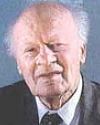
| "We need science education to produce scientists, but we need it equally to create literacy in the public. Man has a fundamental urge to comprehend the world about him, and science gives today the only world picture which we can consider as valid. It gives an understanding of the inside of the atom and of the whole universe, or the peculiar properties of the chemical substances and of the manner in which genes duplicate in biology. An educated layman can, of course, not contribute to science, but can enjoy and participate in many scientific discoveries which as constantly made. Such participation was quite common in the 19th century, but has unhappily declined. Literacy in science will enrich a person's life." - Hans Albrecht Bethe, German-American physicist (born 2 Jul 1906)  |
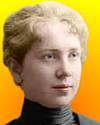 | "I think it is a duty I owe to my profession and to my sex to show that a woman has a right to the practice of her profession and cannot be condemned to abandon it merely because she marries. I cannot conceive how women's colleges, inviting and encouraging women to enter professions can be justly founded or maintained denying such a principle." (From a letter Brooks wrote to her dean, knowing that she would be told to resign if she married, she asked to keep her job. Nevertheless, she lost her teaching position at Barnard College in 1906. Dean Gill wrote that 'The dignity of women's place in the home demands that your marriage shall be a resignation.') - Harriet Brooks, First Canadian woman nuclear physicist (born 2 Jul 1876)  |
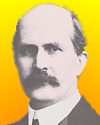
| "Light brings us the news of the Universe." - Sir William Bragg, British physicist (born 2 Jul 1862)  |
| Before you look at today's web page, see if you can answer some of these questions about the events that happened on this day. Some of the names are very familiar. Others will likely stump you. Tickle your curiosity with these questions, then check your answers on today's web page. |

|  Hans Albrecht Bethe, born 2 Jul 1906, is a German-born American theoretical physicist who helped to shape classical physics into quantum physics and increased the understanding of the atomic processes responsible for the properties of matter and of the forces governing the structures of atomic nuclei. He received the Nobel Prize for Physics (1967). Hans Albrecht Bethe, born 2 Jul 1906, is a German-born American theoretical physicist who helped to shape classical physics into quantum physics and increased the understanding of the atomic processes responsible for the properties of matter and of the forces governing the structures of atomic nuclei. He received the Nobel Prize for Physics (1967).
 Explaining what phenomenon earned him the Nobel Prize? |
 |  Sir William Henry Bragg, born 2 Jul 1862, was a pioneer British scientist in solid-state physics who was a joint winner (with his son Sir Lawrence Bragg) of the Nobel Prize for Physics in 1915. During the WW I, Bragg was put in charge of research on the detection and measurement of underwater sounds in connection with the location of submarines. He also constructed an X-ray spectrometer for measuring the wavelengths of X-rays. Sir William Henry Bragg, born 2 Jul 1862, was a pioneer British scientist in solid-state physics who was a joint winner (with his son Sir Lawrence Bragg) of the Nobel Prize for Physics in 1915. During the WW I, Bragg was put in charge of research on the detection and measurement of underwater sounds in connection with the location of submarines. He also constructed an X-ray spectrometer for measuring the wavelengths of X-rays.
 What application of X-rays earned their Nobel Prize? |
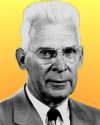
|  Seth Barnes Nicholson (1891-1963) was an American astronomer best known for his discoveries of several satellites of Jupiter, beginning while he was a graduate student at the University of California. Seth Barnes Nicholson (1891-1963) was an American astronomer best known for his discoveries of several satellites of Jupiter, beginning while he was a graduate student at the University of California.
 How many moons of Jupiter were known before he made his discoveries? How many moons of Jupiter were known before he made his discoveries? |
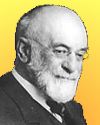
|  Stephen Moulton Babcock (1843-1931) was an American agricultural research chemist, known chiefly because of his development of the Babcock test (1890). Stephen Moulton Babcock (1843-1931) was an American agricultural research chemist, known chiefly because of his development of the Babcock test (1890).  What does the Babcock test measure? What does the Babcock test measure? |
|  On 2 Jul 1940, a new bridge was dedicated, watched by a crowd of 2,000 at Lake Washington, Seattle, Wash. It was made of reinforced concrete. It lasted 50 years. On 2 Jul 1940, a new bridge was dedicated, watched by a crowd of 2,000 at Lake Washington, Seattle, Wash. It was made of reinforced concrete. It lasted 50 years.
 What was remarkable about the use of reinforced concrete? |
|  On 2 Jul 1867, a railroad opened for traffic in New York City. The first half-mile test section was built by Charles T. Harvey. It ran along the curb line of Greenwich Street, between Battery Place and Dey Street. The cars travelled at speeds up to 15 mph. On 2 Jul 1867, a railroad opened for traffic in New York City. The first half-mile test section was built by Charles T. Harvey. It ran along the curb line of Greenwich Street, between Battery Place and Dey Street. The cars travelled at speeds up to 15 mph.
 What was remarkable about this railroad? |
When you have your answers ready to all the questions above, you'll find all the information to check them, and more, on the July 2 web page of Today in Science History. Or, try this link first for just the brief answers.
Fast answers for the previous newsletter for July 1: English Channel; differential and integral calculus; Richard Buckminster Fuller; Charles Goodyear; Linotype machine; the decade including the year 1910.
|
 If you enjoy this newsletter, the website, or wish to offer encouragement or ideas, please send feedback by using your mail reader Reply button. If you enjoy this newsletter, the website, or wish to offer encouragement or ideas, please send feedback by using your mail reader Reply button. |
--
If you do not want to receive any more newsletters,
Unsubscribe To update your preferences and to unsubscribe visit
this link 


 On 2 July 1867, the first elevated railway in America was opened in New York City. Although it was short-lived, it represented important progress to providing public transportation in the growing city.
On 2 July 1867, the first elevated railway in America was opened in New York City. Although it was short-lived, it represented important progress to providing public transportation in the growing city.



 Hans Albrecht Bethe, born 2 Jul 1906, is a German-born American theoretical physicist who helped to shape classical physics into quantum physics and increased the understanding of the atomic processes responsible for the properties of matter and of the forces governing the structures of atomic nuclei. He received the Nobel Prize for Physics (1967).
Hans Albrecht Bethe, born 2 Jul 1906, is a German-born American theoretical physicist who helped to shape classical physics into quantum physics and increased the understanding of the atomic processes responsible for the properties of matter and of the forces governing the structures of atomic nuclei. He received the Nobel Prize for Physics (1967). Explaining what phenomenon earned him the Nobel Prize?
Explaining what phenomenon earned him the Nobel Prize?
 Sir William Henry Bragg, born 2 Jul 1862, was a pioneer British scientist in solid-state physics who was a joint winner (with his son Sir Lawrence Bragg) of the Nobel Prize for Physics in 1915. During the WW I, Bragg was put in charge of research on the detection and measurement of underwater sounds in connection with the location of submarines. He also constructed an X-ray spectrometer for measuring the wavelengths of X-rays.
Sir William Henry Bragg, born 2 Jul 1862, was a pioneer British scientist in solid-state physics who was a joint winner (with his son Sir Lawrence Bragg) of the Nobel Prize for Physics in 1915. During the WW I, Bragg was put in charge of research on the detection and measurement of underwater sounds in connection with the location of submarines. He also constructed an X-ray spectrometer for measuring the wavelengths of X-rays. What application of X-rays earned their Nobel Prize?
What application of X-rays earned their Nobel Prize?
 Seth Barnes Nicholson (1891-1963) was an American astronomer best known for his discoveries of several satellites of Jupiter, beginning while he was a graduate student at the University of California.
Seth Barnes Nicholson (1891-1963) was an American astronomer best known for his discoveries of several satellites of Jupiter, beginning while he was a graduate student at the University of California. How many moons of Jupiter were known before he made his discoveries?
How many moons of Jupiter were known before he made his discoveries? 
 Stephen Moulton Babcock (1843-1931) was an American agricultural research chemist, known chiefly because of his development of the Babcock test (1890).
Stephen Moulton Babcock (1843-1931) was an American agricultural research chemist, known chiefly because of his development of the Babcock test (1890).  What does the Babcock test measure?
What does the Babcock test measure?  On 2 Jul 1940, a new bridge was dedicated, watched by a crowd of 2,000 at Lake Washington, Seattle, Wash. It was made of reinforced concrete. It lasted 50 years.
On 2 Jul 1940, a new bridge was dedicated, watched by a crowd of 2,000 at Lake Washington, Seattle, Wash. It was made of reinforced concrete. It lasted 50 years. What was remarkable about the use of reinforced concrete?
What was remarkable about the use of reinforced concrete? On 2 Jul 1867, a railroad opened for traffic in New York City. The first half-mile test section was built by Charles T. Harvey. It ran along the curb line of Greenwich Street, between Battery Place and Dey Street. The cars travelled at speeds up to 15 mph.
On 2 Jul 1867, a railroad opened for traffic in New York City. The first half-mile test section was built by Charles T. Harvey. It ran along the curb line of Greenwich Street, between Battery Place and Dey Street. The cars travelled at speeds up to 15 mph.  What was remarkable about this railroad?
What was remarkable about this railroad? If you enjoy this newsletter, the website, or wish to offer encouragement or ideas, please send feedback by using your mail reader Reply button.
If you enjoy this newsletter, the website, or wish to offer encouragement or ideas, please send feedback by using your mail reader Reply button. 

Δεν υπάρχουν σχόλια:
Δημοσίευση σχολίου